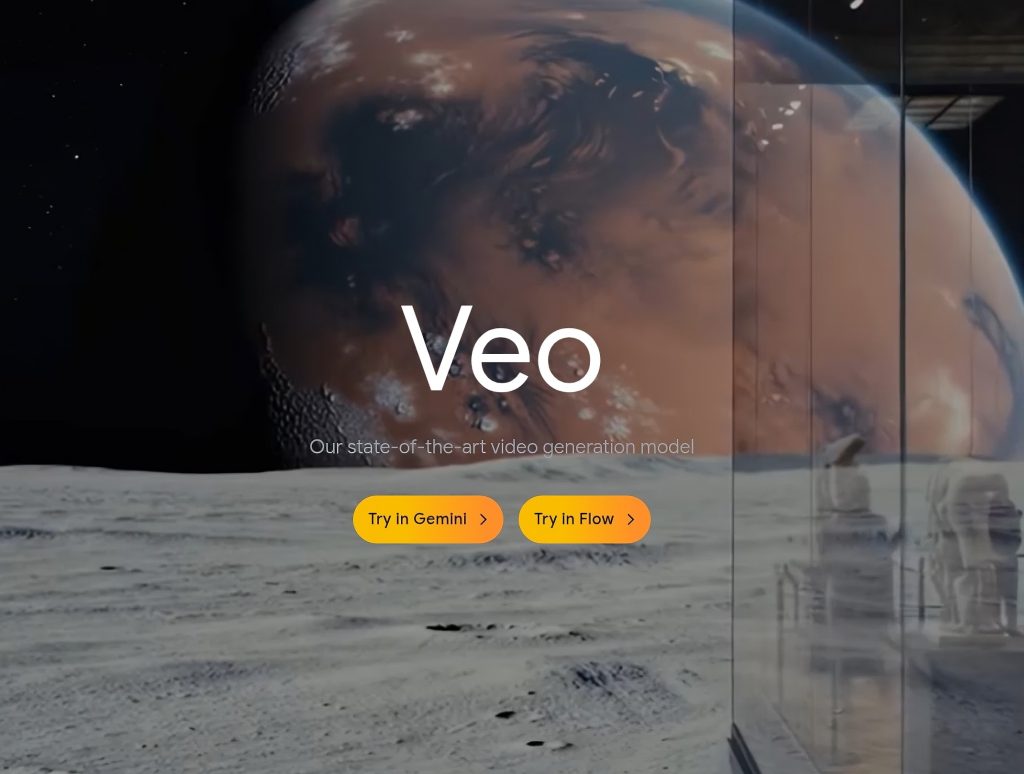Artificial intelligence just leveled up again—and this time, it’s moving. Say hello to Veo 3, Google’s revolutionary AI model that doesn’t just generate video—it generates fully synchronized audio and video, bringing text and image prompts to visceral life.
The Dawn of Audio-Infused AI Video
Released in May 2025, Veo 3 marks a pivotal moment in AI media creation. Unlike its predecessors, Veo 3 doesn’t produce silent clips—it generates sound, including dialogue, sound effects, environmental noise, and even music. Google DeepMind CEO Demis Hassabis described this as the moment AI video left the “silent film era”. Now, with Veo 3, storytellers can literally hear the world they envision.

How It Works—and Where to Use It
Accessible through several Google tools, Veo 3 invites users to bring scenes to life via:
- Text or image prompts—Describe your scene, or upload a photo, and Veo 3 does the rest.
- Plug-and-play video generation—Available in the Gemini app (Pro and Ultra plans), Google Vids in Workspace, and Vertex AI for enterprise users.
Outputs typically run up to 8 seconds in length, available in high-definition (720p in Gemini, scaling up to 1080p via Vertex AI).
Developers can also leverage Veo 3 via the Gemini API and Google AI Studio, priced at around $0.75 per second of rendered audio-video. A faster variant, Veo 3 Fast, promises quicker outputs at optimized cost—ideal for rapid iteration or testing workflows.
What Sets Veo 3 Apart
Seamless Audio-Visual Integration
Veo 3 generates rich, synchronized audio—dialogue, ambient sounds, effects—natively with the video. This elevates storytelling beyond visuals alone.
Stunning Cinematic Quality
Whether creating furry ducks by a riverside or an alien sprinting through a spaceship, Veo 3 excels at realistic textures, lighting, and cinematic atmosphere.
Physics-Based Realism
The tool simulates realistic physics—movements, environmental dynamics, shadows—resulting in more believable action and motion.
Versatile Creative Access
From a casual user on Gemini to enterprise developers via Vertex AI, Veo 3 meets creators at every level. Add Google Flow and Vids to the arsenal, and you’ve got storyboard tools, prompt-driven editing, and scene reuse—all powered by Veo and companion models like Imagen.
Real-World Experiences: Where Veo 3 Shines—and Stumbles
What Works Well
A Tom’s Guide experiment praised Veo 3 for compelling scenes like a family of ducks with hyper-realistic lighting, a chilling but surreal creepy clown, and a claustrophobic alien sprint that looks pulled straight from a sci-fi trailer.
Another user turned still photos into motion—like running by the beach or an alien invasion in a park—accompanied by sound effects. While not perfect in polish, the results were fast, fun, and shareable.
Where It Falters
Not everything is seamless. Scenes involving complex human actions—like a music performance—fell apart: crowd hands blurred, faces glitched mid-motion, and audio misaligned.. Tender moments, such as a mother playing with her baby, suffered from sloppy facial motion and distracting audio balance.
Additional limitations surfaced as users noticed minor visual quirks, repetition of jokes, and occasional weird outputs that missed nuances—especially for emotionally rich or detail-heavy requests.
Why Veo 3 Matters
Google’s Veo 3 is more than just a toy—it’s reshaping how creators, filmmakers, marketers, and teams approach content. Platforms like Flow enable storyboard-driven filmmaking, while enterprise-grade Vertex AI makes cinematic generation at scale possible. A short film entirely produced with Veo3 and Flow demonstrates how AI can compress years-long pipelines into weeks—without actors or sets..
But as with any great power, there are ethical strings attached. Critics warn about the misuse of photo-realistic video for misinformation, intellectual property abuse, and devaluation of human artistry—raising the question of where accountability lies in the new AI-driven creative economy.
Conclusion: Veo 3 Is AI Video’s Soundtrack to the Future
Google’s Veo 3 is a landmark. It empowers creators not just to imagine, but to see and hear their visions in motion—with cinematic flair, synchronized audio, and intuitive workflows. From casual users experimenting with Gemini to production teams leveraging Vertex AI and Flow, Veo 3 is democratizing storytelling power.
Yet challenges remain: human nuance, facial realism, and emotional subtlety still peek through the cracks of even the most polished renderings. And with power comes responsibility—creators and platforms alike must tread carefully as AI-generated media becomes more indistinguishable from the real thing.








